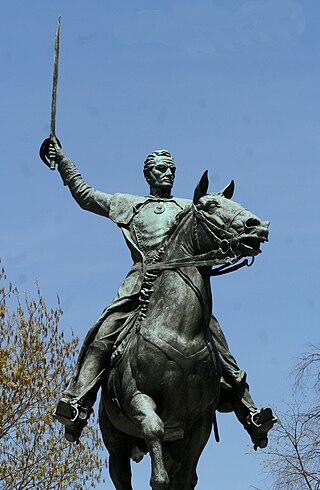
The military and political career of Simón Bolívar, which included both formal service in the armies of various revolutionary regimes and actions organized by himself or in collaboration with other exiled patriot leaders during the years from 1811 to 1830, was an important element in the success of the independence wars in South America. Given the unstable political climate during these years, Bolívar and other patriot leaders, such as Santiago Mariño, Manuel Piar, José Francisco Bermúdez and Francisco de Paula Santander often had to go into exile in the Caribbean or nearby areas of Spanish America that at the moment were controlled by those favoring independence, and from there, carry on the struggle. These wars resulted in the creation of several South American states out of the former Spanish colonies, the currently existing Venezuela, Colombia, Ecuador, Peru and Bolivia, and the now defunct Gran Colombia.
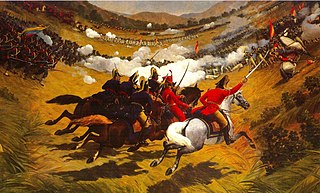
The Venezuelan War of Independence was one of the Spanish American wars of independence of the early nineteenth century, when independence movements in South America fought a civil war for secession and against unity of the Spanish Empire, emboldened by Spain's troubles in the Napoleonic Wars.
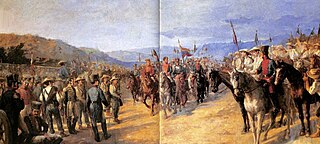
Bolívar's campaign to liberate New Granada also known as the Liberation Campaign of 1819 was part of the Colombian and Venezuelan wars of independence and was one of the many military campaigns fought by Simón Bolívar. In 1819 Bolívar led a combined New Granadan and Venezuelan Army in a campaign to liberate New Granada which had been under Spanish control since 1816.

The Battle of Boyacá (1819), also known as the Battle of Boyacá Bridge was a decisive victory by a combined army of Venezuelan and New Granadan troops along with a British Legion led by General Simon Bolivar over the III Division of the Spanish Expeditionary Army of Costa Firme commanded by Spanish Colonel José Barreiro. This victory ensured the success of Bolívar's campaign to liberate New Granada. The battle of Boyaca is considered the beginning of the independence of the north of South America, and is considered important because it led to the victories of the battle of Carabobo in Venezuela, Pichincha in Ecuador, and Junín and Ayacucho in Peru. New Granada acquired its definitive independence from the Spanish Monarchy, although fighting with royalist forces would continue for years.

The Battle of Carabobo, on 24 June 1821, was fought between independence fighters, led by Venezuelan General Simón Bolívar, and the Royalist forces, led by Spanish Field Marshal Miguel de la Torre. Bolívar's decisive victory at Carabobo led to the independence of Venezuela and establishment of the Republic of Gran Colombia.
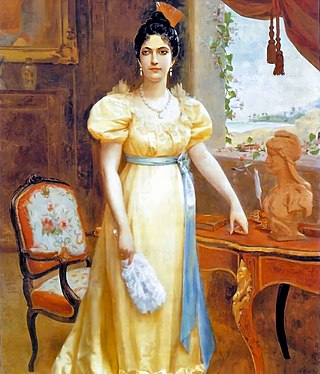
Luisa Cáceres Díaz de Arismendi was a heroine of the Venezuelan War of Independence.

Santiago Mariño Carige Fitzgerald, was a nineteenth-century Venezuelan revolutionary leader and hero in the Venezuelan War of Independence (1811–1823). He became an important leader of eastern Venezuela and for a short while in 1835 seized power over the new state of Venezuela.

Antonio Clemente José María Bernabé Ricaurte Lozano was a patriot of the Independence of Colombia and Venezuela and captain of Bolívar's army. He is remembered as the martyr of the Battle of San Mateo, where, in a heroic action, he blasted an enemy stronghold by immolating himself.
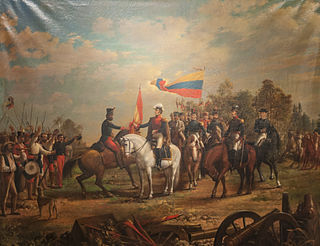
The Battle of Araure was fought during the short-lived Second Republic of Venezuela on 5 December 1813, in the city of Araure in Portuguesa State, Venezuela. Simon Bolivar's force defeated General José Ceballos.
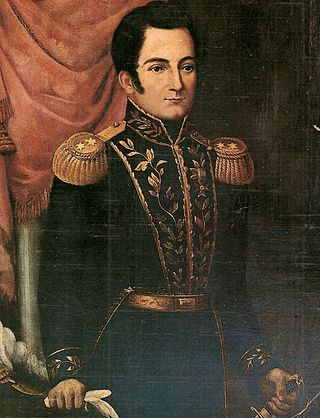
Mariano Montilla was a major general of the Army of Venezuela in the Venezuelan War of Independence.
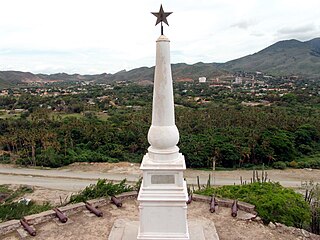
The Battle of Matasiete was a battle in the Venezuelan War of Independence that took place on 31 July 1817 near the city of La Asunción on Isla Margarita in Venezuela. It was fought between pro-independence Republican revolutionaries led by Francisco Esteban Gómez and Spanish Royalist forces under the command of Pablo Morillo. The outcome was a Spanish defeat.
The First Battle of Carabobo (1814) was a battle in the Venezuelan War of Independence, in which the forces of the Second Republic, commanded by Simón Bolívar, defeated the Spanish forces under Field marshal Juan Manuel de Cajigal y Martínez.
The Battle of Niquitao was a part of the Venezuelan War of Independence which took place on 2 July 1813 in Boconó.
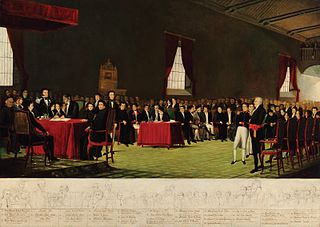
The Venezuelan independence was the juridical-political process that put an end to the ties between the Captaincy General of Venezuela and the Spanish Empire. It also implied the replacement of the absolute monarchy by the republic as the form of government in Venezuela.
The First Battle of Angostura took place during the Venezuelan War of Independence. The battle saw Patriot forces attempt to capture the city of Angostura, but retreat after being unable to penetrate Spanish defenses.

The Battle of Aragua de Barcelona was fought between Royalists of the Spanish Empire and the Second Republic of Venezuela on 17 August 1814. The battle saw Royalists attack Simón Bolívar's force of 3,000 and win with their 8,000 soldiers. It was a major loss for the Patriots.

The 1814 Caracas Exodus or Emigration to the East occurred during the Venezuelan War of Independence, when Venezuelan Patriots and thousands of civilians fled from the capital Caracas towards the East of the country, after the defeat in the Second Battle of La Puerta on 15 June 1814.
The Fifth Battle of Maturín was a military confrontation on 11 December 1814, that resulted in the epilogue of the Second Republic of Venezuela. The Royalist forces, which for two years had tried to conquer the city, destroyed the last great Patriot garrison that remained in the country.
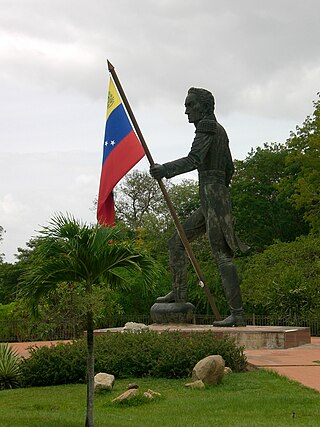
The Second Battle of Angostura was a military siege and confrontation that took place in the context of the Venezuelan War of Independence between Patriot and Royalist forces, that ended with victory for the Patriots, who managed to capture the city of Angostura on 17 July 1817.
The Battle of Pagallos, or, alternatively Pagayos, was a battle on 8 July 1817 during the Venezuelan War of Independence. In the battle, ships under Antonio Díaz carrying materiel to Simón Bolívar's Patriot army were attacked by eleven Royalist ships in the Orinoco, near the island of Pagallos. Patriots took heavy losses but successfully forced Royalists out of the Orinoco.














